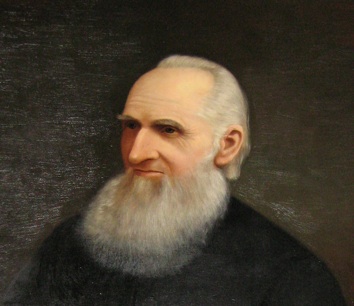Beginnings

On a Sunday afternoon in 1843, in a schoolhouse in downtown Kingston, about a dozen people gathered for worship.
The neighbourhood that is now Queen’s University was then called Stuartsville. At the time it was not part of Kingston proper. It had somewhat lower taxes and was a poorer part of town. Most of its residents were Irish immigrants.
There were not many stone and brick houses. Most of the structures were frame and clapboard buildings. Hogs-pens and slaughterhouses were scattered here and there. There was a high level of alcohol consumption and an extraordinary number of drinking establishments in the Kingston area in those days. There were problems of cholera and typhus associated with poor sanitation and many social problems that accompanied alcohol abuse.
An English minister named Robert Rogers was living in the area. He was working as a chaplain at the brand new jail (called Kingston Penitentiary). He was also teaching at the Midland District School House (a predecessor to Kingston Collegiate Vocational Institute). His picture still hangs on the wall of KCVI along with its other principals. Rogers had been very active in the anti-slavery cause in the US and Canada. He was also involved with starting the YMCA in Kingston.
Rogers was a man who had a heart for the marginalized: for blacks, prisoners, children, and poor folk.
He strongly believed in the importance of small group ministries (and led bible studies until he was 80 years old!). He was a man of deep faith and biblical conviction. And, he was a man of action.
He circulated a notice around town which read as follows: “A free church will be opened on Sunday next at 3 o’clock pm in the line barracks school room and continued until further notice.” This new congregation would be part of the United Church of England and Ireland. By “free church” he meant that it was intended to be self-supporting. It was not to be a mission of St. George’s Cathedral which depended on subsidies to exist. It would also offer services for free –without charging pew-rent for those who attended.
So, on June 25 Rogers gathered with a handful of mostly young, mostly Irish folks. In attendance was a brewer, a soldier and a man named John Cooper who played cello to accompany the hymn singing. Little is known about what that service was like, but what we do know is that the congregation continued to meet regularly to praise God: first in the Line Barracks School, then in the Midland District School House, then in a furniture store on the corner of Brock and Clergy Streets and then in a limestone building that had been the Parliament Building, and is now part of Kingston General Hospital.
They continued to meet to praise God, and their numbers grew steadily.
In the next year (1844) they celebrated their first recorded wedding and baptisms and they were formally organized as a new parish. They acquired a piece of land on Union Street (then merely a track leading to a cow pasture). It was on the corner of Arch Street (which was planned to be a major north-south thoroughfare through the city). It was land that was said to be “for the convenience of the working classes.” On a Saturday afternoon in September 1844 a cornerstone was laid there by Bishop Strachan of Toronto.
They wasted no time. They began to raise funds for building. They worked together to come up with plans and hire builders and organize volunteer labourers.
What amazing people of action they must have been, for in just over two years from that first meeting in the school house they moved into a beautiful house of worship. And we have been meeting here ever since.
Over the decades hundreds of people have come to faith in Christ. Many were poor people and many were students of the university which grew up around St. James.’ People came…not just from Ireland, but from all over the world. And hundreds and hundreds moved on…many to be leaders in Christian communities across Canada and around the globe. <ahref=”#fn1″id=”ref1″>1 &2
1. Originally posted by T. Vickery, on a previous website]↩
2. from “Living Stones” by Dr. David Lyon. The book is a fascinating history of St. James’. Copies may be obtained at the parish office./↩
The Memorials Committee At St. James :
This group keeps track of historically significant memorials in the church. Aldwyth Chisolm leads this ministry .